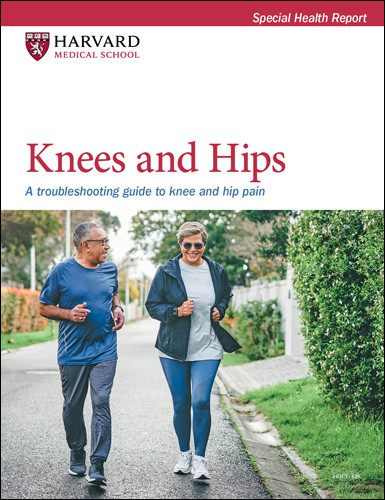Physical therapy: Myths vs. reality
Don't let misconceptions about PT derail you from achieving a fuller recovery.
- Reviewed by Toni Golen, MD, Editor in Chief, Harvard Women's Health Watch; Editorial Advisory Board Member, Harvard Health Publishing; Contributor

If you think of physical therapy (PT) as a regimen of targeted exercises done in the aftermath of surgery or injury, you'd be partly right. But if you've never done PT — or it's been years since you did — it's time to view it with a wider lens, a Harvard expert says.
Physical therapists work with far more types of patients than in just those two realms — including people coping with stroke, brain injuries, balance problems, neuromuscular conditions, spinal cord injuries, and more.
More than 50 million Americans seek PT each year, taking part in an estimated 300 million total therapeutic sessions to improve their mobility, strength, and flexibility and maximize their physical functioning.
"People tend to think about PT with a very narrow scope," says Mary Kate Miller, clinical supervisor of physical therapy at Harvard-affiliated Spaulding Rehabilitation Outpatient Center Malden. "They think we give massages or only work with people in pain or after surgery."
"Manual therapy is a very small part of what we do," she adds. "Physical therapists are really movement specialists — we help people optimize movement."
Clearing the air
From the start, PT deviates from conventional health care approaches by offering patients a large measure of control.
"We spend the first day learning about each patient and what's important to them and working together on a plan to get them back to what they want to do," says Miller, who is also president of the Massachusetts chapter of the American Physical Therapy Association. "It's really a collaborative effort."
Miller offers these additional examples of how PT may differ from what you might expect:
1. Myth: Only people with pain need PT.
FACT: While the most common reason to seek PT is back pain — accounting for one-third of cases — physical therapists treat patients with a broad range of other problems, including pelvic floor dysfunction, vertigo, neurological disorders, and high risk of falling.
"Yes, people in pain are probably our bread and butter, but we improve mobility, enhance function, and optimize health across the board," Miller says. "We see a lot of people just trying to live their lives, whether they play sports recreationally or just want to lift their kids or carry their laundry up the stairs."
2. Myth: PT isn't working unless it causes pain.
FACT: The adage "no pain, no gain" doesn't apply to PT. "I cringe when I hear someone call physical therapy 'pain and torture,'" Miller says. "While some things we do may create some discomfort initially, our goal is to get patients to a point where they're not in pain and to promote healing without causing unnecessary pain."
3. Myth: Any health care provider can offer PT.
FACT: Highly specialized training — which may culminate in earning a doctorate — is required. "Many providers may offer similar interventions, but you're not going to get the same comprehensive level of care as you would with a physical therapist," she says.
4. Myth: Physical therapists will tell me to stop doing my favorite activities.
FACT: "We will not do that," Miller says. "My favorite part of being a physical therapist is helping people find ways to do what they love. We work with people to set goals that are meaningful for them and work to get them back to those activities. I can count on one hand the number of patients I've told, 'No, you can't do that,' or 'That's not achievable.'"
5. Myth: I need a referral to see a physical therapist.
FACT: Not usually, though some insurance plans — such as Medicare — do require a referral before covering the treatment. "But many private insurers don't require that, and you can just walk into a PT center and get scheduled for a visit," she says. "It's always a good idea to check with your insurance company first to make sure."
Reap the rewards
If you're already undergoing PT or planning on doing so soon, Miller offers this advice to maximize its benefits.
Be open. "Be honest with your physical therapist about what's most important to you so you can work together to establish goals that are meaningful," she says.
Be an active participant. "PT is not something where the physical therapist is going to tell you what to do — they're teaching you tools for how you can help yourself," she says. "If you take ownership over your health, you'll definitely get the most out of the experience."
Image: © jeffbergen/Getty Images
About the Author

Maureen Salamon, Executive Editor, Harvard Women's Health Watch
About the Reviewer

Toni Golen, MD, Editor in Chief, Harvard Women's Health Watch; Editorial Advisory Board Member, Harvard Health Publishing; Contributor
Disclaimer:
As a service to our readers, Harvard Health Publishing provides access to our library of archived content. Please note the date of last review or update on all articles.
No content on this site, regardless of date, should ever be used as a substitute for direct medical advice from your doctor or other qualified clinician.
















